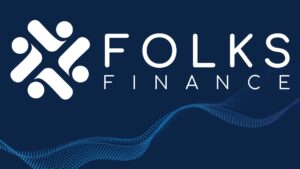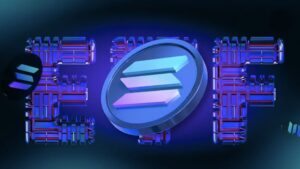Hyperliquid DeFi performance continues to outpace traditional competitors in the altcoin market. Recent data reveals that surging transaction fees and unprecedented trading volumes are positioning Hyperliquid as a dominant force in the DeFi ecosystem. With institutional investors and retail traders alike flocking to this revolutionary platform, understanding the mechanics behind Hyperliquid’s DeFi performance has become crucial for anyone seeking exposure to high-performing digital assets. This comprehensive analysis explores how rising fee structures, technological innovations, and strategic positioning have transformed Hyperliquid into one of the most compelling opportunities in today’s cryptocurrency market.
Hyperliquid’s Explosive Growth in the DeFi Sector
Hyperliquid DeFi performance has become a focal point for cryptocurrency analysts and investors throughout 2025. The platform’s native token, HYPE, has demonstrated remarkable resilience amid market volatility, consistently outperforming established altcoins across multiple metrics. This success stems from a unique combination of technological superiority, user-centric design, and an innovative fee-sharing mechanism that rewards active participants.
The decentralized perpetual futures exchange has carved out a distinctive niche by offering institutional-grade trading infrastructure without the centralized risks associated with traditional exchanges. Unlike conventional platforms that extract value from users, Hyperliquid’s architecture redistributes a significant portion of trading fees directly to liquidity providers and token holders, creating a sustainable economic model that incentivizes long-term participation.
The Fee Revenue Model Driving Platform Dominance
Transaction fees represent the lifeblood of any decentralized exchange, and Hyperliquid has mastered the art of converting trading activity into sustainable revenue streams. During peak trading periods, the platform has generated daily fee revenues exceeding several million dollars, with a substantial percentage distributed back to the community through various mechanisms.
The platform employs a tiered fee structure that rewards high-volume traders with reduced rates while maintaining competitive pricing for smaller participants. This balanced approach has attracted diverse user demographics, from algorithmic trading firms executing thousands of transactions daily to individual investors seeking exposure to leveraged altcoin positions.
What distinguishes Hyperliquid’s DeFi performance from competitors is the transparency and efficiency of its fee distribution system. Smart contracts automatically allocate portions of collected fees to liquidity pools, staking rewards, and protocol development funds, ensuring that ecosystem growth directly benefits all stakeholders rather than concentrating wealth among a small group of insiders.
How Rising DeFi Fees Enhance Hyperliquid DeFi Performance
The correlation between increased fee generation and Hyperliquid DeFi performance extends beyond simple revenue metrics. Higher fees typically indicate robust trading volumes, which in turn signal strong market confidence and liquidity depth—two critical factors that institutional investors evaluate when allocating capital to DeFi protocols.
Trading Volume Surge and Market Positioning

Recent trading data demonstrates that Hyperliquid has consistently ranked among the top decentralised exchanges by daily volume, frequently surpassing $500 million in 24-hour trading activity. This volume concentration creates several compounding advantages that reinforce the platform’s competitive positioning.
First, deeper liquidity pools reduce slippage for large transactions, making the platform more attractive to whales and institutional traders who require efficient execution for substantial position sizes. Second, higher volumes generate increased fee revenue, which funds continuous protocol improvements and aggressive liquidity mining incentives. Third, the visible success attracts additional developers and projects seeking to build complementary services within the Hyperliquid ecosystem.
The perpetual nature of these advantages creates a positive feedback loop where Hyperliquid DeFi performance improvements attract more users, which generates higher fees, which fund better infrastructure, which attracts even more users—a virtuous cycle that has proven difficult for competitors to disrupt.
Fee-Sharing Mechanisms and Token Economics
The HYPE token serves multiple functions within the ecosystem, with fee-sharing representing one of its most compelling utilities. Token holders who stake their HYPE receive proportional distributions from the platform’s fee treasury, effectively transforming the asset into a yield-generating instrument backed by real protocol revenue rather than inflationary token emissions.
This model fundamentally differentiates Hyperliquid’s DeFi performance from numerous competitors that rely on unsustainable tokenomics. While many DeFi protocols inflate their token supplies to incentivize participation, Hyperliquid’s approach ties rewards directly to actual platform usage and profitability. This creates natural buying pressure for HYPE tokens as traders seeking to maximize returns acquire and stake assets to capture their share of fee distributions.
Technical Innovations Powering Superior Altcoin Performance
Beyond economic incentives, Hyperliquid DeFi performance benefits from cutting-edge technological implementations that enhance user experience and operational efficiency. The platform’s proprietary order book infrastructure processes transactions with latency comparable to centralized exchanges while maintaining full decentralization and non-custodial security.
High-Performance Blockchain Architecture
Hyperliquid operates on a custom Layer 1 blockchain specifically optimized for high-frequency trading applications. This specialized architecture achieves transaction finality in approximately one second—dramatically faster than general-purpose blockchains like Ethereum, which can experience significant delays during network congestion.
The technical specifications include a consensus mechanism that balances security, decentralization, and throughput, enabling the network to process thousands of transactions per second without compromising reliability. This performance ceiling ensures that Hyperliquid’s DeFi performance remains consistent even during periods of extreme market volatility when trading activity spikes dramatically.
Additionally, the platform implements sophisticated risk management protocols that automatically adjust margin requirements, liquidation parameters, and position limits based on real-time market conditions. These dynamic safeguards protect both individual traders and the overall protocol from cascading liquidations that have plagued other leveraged trading platforms during black swan events.
Cross-Chain Integration and Asset Diversity
The platform’s roadmap includes expanding cross-chain functionality to support assets from multiple blockchain ecosystems, significantly broadening the range of tradable instruments. This interoperability positions Hyperliquid DeFi performance to benefit from growth across the entire cryptocurrency market rather than remaining siloed within a single blockchain ecosystem.
Current integrations already support seamless bridging from major chains, allowing users to deposit collateral and access leveraged positions without navigating complex multi-step processes. Future developments promise to expand this capability, potentially enabling traders to access perpetual futures contracts for long-tail altcoins that lack sufficient liquidity on other platforms.
Comparative Analysis: Hyperliquid vs. Competing DeFi Platforms
Understanding Hyperliquid DeFi performance requires contextual comparison against alternative platforms offering similar services. Several metrics distinguish Hyperliquid’s approach and explain its superior growth trajectory.
Fee Efficiency and User Economics
Traditional decentralized exchanges charge trading fees ranging from 0.05% to 0.30% per transaction, with limited rebate structures for high-volume users. Hyperliquid’s competitive fee schedule, combined with its reward distribution model, effectively reduces net trading costs for active participants—sometimes resulting in negative effective fees for market makers who receive rebates exceeding their transaction costs.
This economic advantage becomes particularly significant for algorithmic trading strategies that generate thousands of small transactions daily. For these users, the cumulative fee savings and earned rebates can represent substantial portions of overall profitability, making Hyperliquid’s DeFi performance especially attractive to sophisticated market participants who drive the majority of platform volume.
Liquidity Depth and Market Quality
Liquidity represents the fundamental differentiator between functional and dysfunctional trading platforms. Hyperliquid’s focused approach to incentivizing market makers has resulted in consistently tight bid-ask spreads across major trading pairs, with market depth sufficient to absorb multi-million-dollar orders without significant price impact.
Comparative analysis shows that during volatile market conditions, when many competing platforms experience liquidity fragmentation and widening spreads, Hyperliquid maintains relatively stable market quality. This reliability stems from the platform’s sophisticated market maker programs and the economic alignment between protocol success and participant profitability.
The measurable impact on Hyperliquid DeFi performance appears in sustained trading volumes that continue growing even during broader market downturns, suggesting that users increasingly view the platform as their primary trading venue rather than an occasional alternative to centralized exchanges.
Investment Implications of Hyperliquid’s Rising DeFi Fees
For investors evaluating exposure to high-performing DeFi protocols, Hyperliquid DeFi performance presents a compelling case study in sustainable tokenomics and real utility creation. Several factors merit consideration when assessing the investment thesis.
Revenue Generation and Protocol Sustainability
Unlike speculative tokens lacking fundamental value drivers, HYPE’s valuation increasingly correlates with actual platform usage and fee generation. This connection to tangible business metrics provides a framework for fundamental analysis similar to traditional equity evaluation—a rarity in the cryptocurrency sector where most assets trade primarily on narrative and speculation.
Analyzing fee revenue trends offers insight into platform growth trajectory and potential future valuations. If Hyperliquid maintains current growth rates while expanding its market share within the broader DeFi ecosystem, the protocol’s revenue generation could reach levels comparable to established centralized exchanges, potentially justifying significantly higher valuations for ecosystem tokens.
Risk Factors and Competitive Dynamics
Despite impressive Hyperliquid DeFi performance metrics, potential investors must acknowledge inherent risks. Regulatory uncertainty surrounding decentralized derivatives platforms represents a persistent concern, as governmental authorities worldwide continue developing frameworks for cryptocurrency oversight.
Technical risks also merit consideration, including potential smart contract vulnerabilities, blockchain network issues, or oracle manipulation attacks that could compromise platform integrity. While Hyperliquid has implemented comprehensive security measures and conducted multiple audits, no system achieves absolute invulnerability to sophisticated attacks.
Competition from well-funded centralized exchanges launching their own perpetual futures products, as well as other decentralized platforms improving their offerings, could erode Hyperliquid’s current advantages. Maintaining Hyperliquid’s DeFi performance leadership position requires continuous innovation and adaptation to evolving market preferences.
Future Outlook: Sustaining Hyperliquid DeFi Performance Growth
The trajectory of Hyperliquid DeFi performance over the next several quarters will likely depend on execution across multiple strategic priorities. Platform developers have outlined ambitious roadmaps addressing feature expansion, geographic reach, and ecosystem development.
Product Expansion and Market Penetration

Planned feature releases include additional asset classes beyond cryptocurrency perpetuals, potentially encompassing tokenized commodities, synthetic stocks, and other derivative instruments. This diversification could significantly expand the addressable market and attract user demographics currently underserved by existing DeFi platforms.
Geographic expansion represents another growth vector, with targeted initiatives to build communities in emerging markets where cryptocurrency adoption continues accelerating. Localized marketing efforts, regional partnerships, and tailored product offerings could unlock substantial new user bases for the platform.
Institutional Adoption and Regulatory Clarity
Perhaps the most significant catalyst for sustained Hyperliquid DeFi performance would be meaningful institutional adoption. As regulatory frameworks mature and institutional cryptocurrency infrastructure develops, barriers preventing traditional financial institutions from accessing DeFi protocols continue diminishing.
Hyperliquid’s institutional-grade infrastructure positions it favorably for this transition. The platform’s order book model, familiar to professional traders, combined with improving custody solutions and regulatory compliance tools, could facilitate capital inflows from family offices, hedge funds, and eventually even traditional asset managers seeking cryptocurrency exposure.
Maximizing Returns Through Strategic Hyperliquid Participation
For users seeking to capitalize on Hyperliquid DeFi performance, several strategies optimize exposure while managing associated risks. Understanding these approaches enables more informed decision-making aligned with individual risk tolerance and investment objectives.
Active Trading vs. Passive Staking Strategies
Active traders can leverage Hyperliquid’s perpetual futures contracts to express directional views on cryptocurrency markets with amplified exposure. The platform’s competitive fees and deep liquidity make it suitable for various trading strategies, from scalping short-term price movements to holding leveraged positions across multi-week trends.
Alternatively, passive participants can stake HYPE tokens to earn proportional distributions from platform fees without requiring active market engagement. This approach provides exposure to Hyperliquid’s DeFi performance growth while avoiding the complexity and risk associated with leveraged trading.
Sophisticated investors might employ combined strategies, allocating portions of capital to both active trading and passive staking to create diversified exposure capturing multiple value streams within the Hyperliquid ecosystem.
Liquidity Provision and Market Making Opportunities
Users with substantial capital and technical expertise can participate as liquidity providers, earning trading fee rebates while facilitating efficient markets. This advanced strategy requires sophisticated risk management and typically involves automated market making software, but can generate attractive risk-adjusted returns for qualified participants.
The economic alignment between market maker profitability and overall Hyperliquid DeFi performance ensures that successful liquidity providers contribute meaningfully to platform health while capturing value commensurate with their role in ecosystem functioning.
Conclusion: Capitalizing on Hyperliquid’s DeFi Dominance
The evidence overwhelmingly demonstrates that Hyperliquid DeFi performance has established new benchmarks for decentralized trading platforms, driven by rising fee revenues that fund continuous improvement and reward active participants. As traditional finance increasingly recognizes the inevitability of blockchain-based markets, platforms combining Hyperliquid’s technological sophistication with sustainable economic models position themselves as likely long-term winners in the evolving financial landscape.
For investors, traders, and DeFi enthusiasts seeking exposure to this transformative sector, understanding the mechanics behind Hyperliquid’s DeFi performance superiority provides crucial context for informed decision-making. Whether through direct token acquisition, active platform participation, or passive staking strategies, opportunities abound for those willing to engage thoughtfully with this revolutionary protocol.
As the cryptocurrency market matures and institutional adoption accelerates, platforms demonstrating real utility, sustainable economics, and superior user experience will inevitably capture disproportionate market share. Current indicators suggest Hyperliquid possesses these critical attributes, positioning it for continued growth as the DeFi sector evolves.
Take action today: Explore Hyperliquid’s platform, analyze current Hyperliquid DeFi performance metrics, and determine how this innovative protocol might fit within your broader cryptocurrency investment strategy. The convergence of rising fees, expanding functionality, and growing adoption creates a compelling opportunity for early participants in what may become the dominant decentralized trading infrastructure of the next financial era.
Read more: Shiba Inu Struggling or Poised for a Comeback




